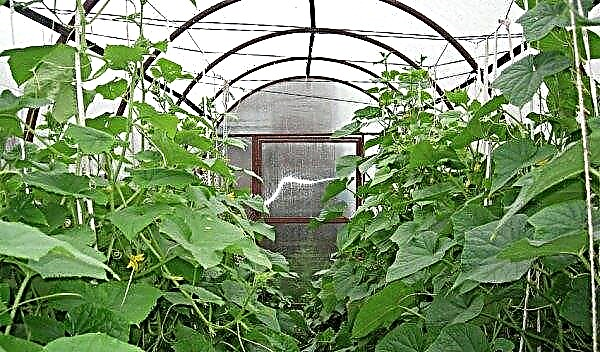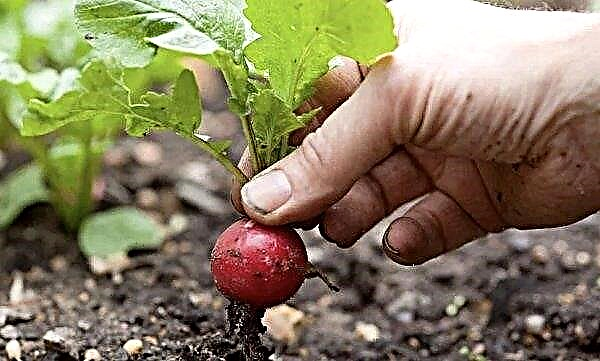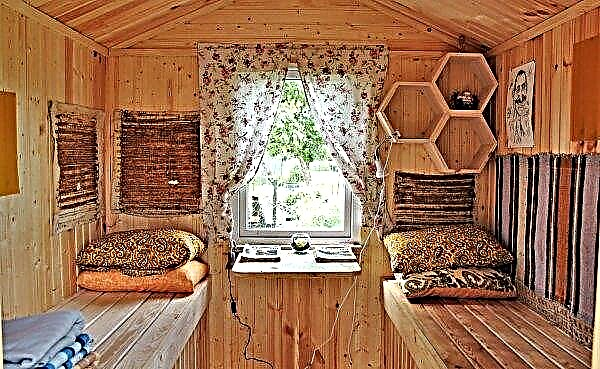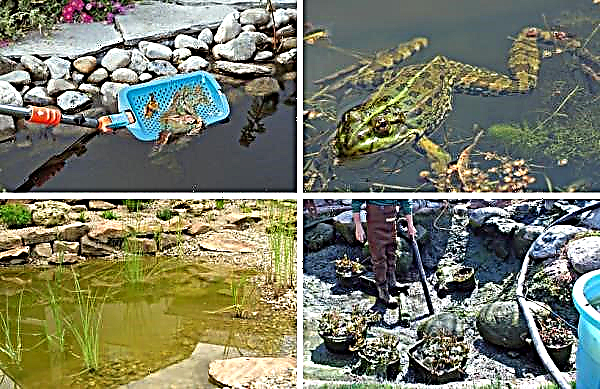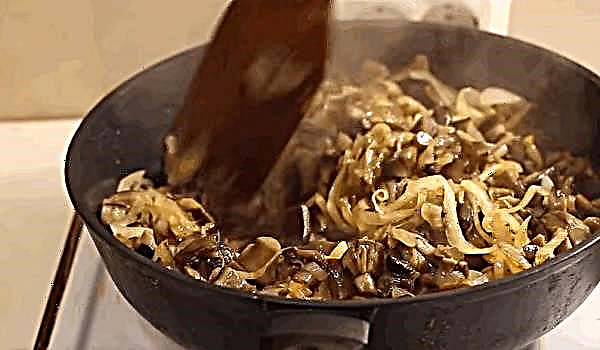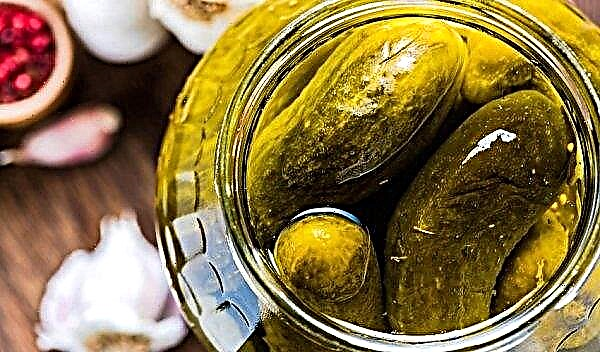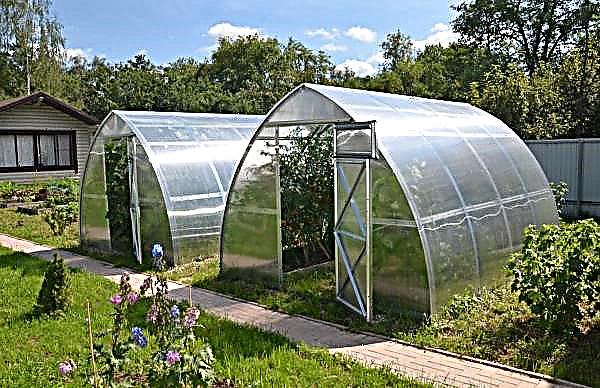In many garden plots, polycarbonate greenhouses flaunt, glistening with transparent sides. These structures provide plants with shelter from the cold, and contribute to the ripening of an early harvest of vegetables and herbs. But these durable structures require periodic repairs. This article will discuss how to independently repair a greenhouse from cellular polycarbonate.
What role does repair play in a greenhouse?
Timely repairs made to any frame greenhouse coated with cellular polycarbonate will increase the service life of the veggie several times. Accurate use of the structure and timely care are two main conditions for the long operation of such a greenhouse.
Did you know? Under transparent defenses you can grow tropical plants even in cold climates. If the greenhouse is equipped with a heating system, then its operation can continue in the winter.
Do-it-yourself scheduled repairs
In the operation of the greenhouse, it is most important to maintain in order such significant parts of the structure as: foundation, frame and coating. Since the greenhouse is covered throughout the year, periodic maintenance is also needed during this time.
Inspection of the foundation, frame and coating
After a thorough inspection and determination of the scope of work, the home foreman proceeds directly to repair the polycarbonate greenhouse.
Possible reasons for the repair:
- Weak frame. If the frame of the greenhouse is weak, and sometimes bends under the weight of polycarbonate sheets or snow, you need to take measures to strengthen it. For this, several additional side supports and additional ceiling beams are installed in the greenhouse. The beams reinforcing the greenhouse design are made of the same material from which the main frame of the greenhouse (metal or wood) is made. Before carrying out repairs to strengthen the supporting structure, experts recommend removing polycarbonate sheets from the structure. You can also make good support for the roof of the greenhouse from the inside of the structure by installing T-shaped props in places that require this. If such supports are installed in the middle of the arc-shaped greenhouse, they are placed along the center to the very end, at a distance of about a meter from each other.

- Damage. If the greenhouse frame was damaged by wind or heavy snow, you must repair the structure yourself. You may need to straighten or swap some parts. It may be necessary to make a patch, blocking the small hole that has appeared. In the place of deflection of the structure, it is recommended to put an additional support to reduce the load on the main skeleton of the greenhouse in this place. Repair is best done in good weather, in the absence of snow, rain or wind.

- Foundation. If the foundation for the greenhouse was built in accordance with all the requirements and standards for such structures, then most likely there will be no problems with the foundation. But in reality, such problems are not so rare, any distortion of the soil or destruction of the foundation under the greenhouse, which requires immediate repair. Otherwise, under the influence of weather conditions and loads, the structure will skew, and the structure may collapse. To correct a gap or settlement of the foundation, the damage site is cleaned from debris, after which formwork is installed from the boards and cement mortar is poured into it. After the cement hardens, the formwork boards are removed, and the foundation will again be smooth and strong.
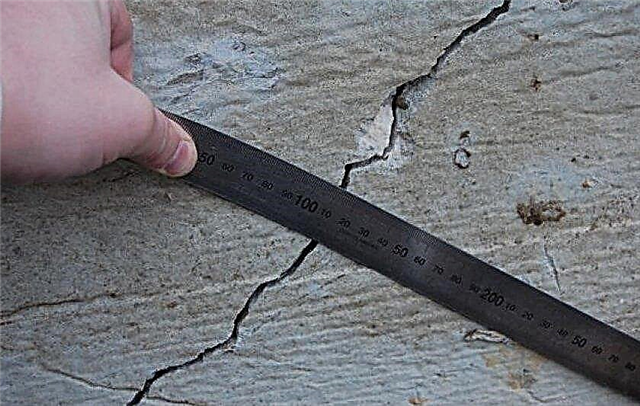
Sheath update
When replacing cover sheets, care must be taken not to install them on the wrong side. This will leave the ends of the sheets of cellular polycarbonate open. As a result, water, dust, insects will penetrate into the hollow structure, in the future green mold will form there. In winter, the water inside the cellular polycarbonate freezes and breaks the coating or causes microcracks.
Important! The home foreman needs to remember that repairing a polycarbonate greenhouse with your own hands, without following the instructions of the material manufacturer, can lead to deformation and damage to the greenhouse structure.
All this will reduce the transparency of the coating, and reduce the service life of the material by several times. In case of damage to the greenhouse cover, it will be necessary to repair it. On polycarbonate, cloudy areas, loss of transparency, water inside the sheet, bloating of plastic may occur. If the material is blown away by “bubble” due to high temperatures inside the structure, it is necessary to re-attach the casing to the frame of the body.
Threading screws
When fixing the old polycarbonate sheet with self-tapping screws, holes remain from the previous mounts. These openings are tightly sealed, which prevents the penetration of moisture into the honeycomb sheet. You can seal unnecessary holes with plasticine, wax, or seal with tape. It must be borne in mind that under the influence of dampness, adhesive tape tends to peel off over time, so it needs to be updated every two to three months.
Important! When attaching cellular polycarbonate to the frame structure, it is undesirable to use ordinary screws, as this can cause microcracks to appear at the junction. For these purposes, experts recommend purchasing special self-tapping screws with wide thermal caps. Such mounts are additionally equipped with rubber gaskets.
Repair of other elements of the greenhouse
Sometimes growers have to quickly take measures to repair the structure at a time when it is impossible to remove polycarbonate from the greenhouse. For example, this can happen in the winter, after heavy snowfalls that caused the roof to fail or cracks in polycarbonate. It also happens that a hurricane wind tears off the coating sheets from the frame and bends them in the opposite direction. In some cases, the craftsmen themselves make patches for walls or ceilings. It is desirable that the patch be cut from polycarbonate of the same thickness as the main coating of the structure. Small holes on the roof are repaired by gluing a patch of a slightly larger diameter on top. Patches are planted on plastic glue.
In some cases, the craftsmen themselves make patches for walls or ceilings. It is desirable that the patch be cut from polycarbonate of the same thickness as the main coating of the structure. Small holes on the roof are repaired by gluing a patch of a slightly larger diameter on top. Patches are planted on plastic glue.
Sealing cracks and cracks
The most difficult damage to repair is a large crack that appeared on cellular polycarbonate. Such a nuisance can occur if a heavy tree branch falls on a roof of a structure from a great height, or on a frosty day a plastic sheet gets a strong blow with a garden tool, for example, a shovel as a result of clearing the roof of snow. If a crack occurs, it can be blown out with rubber sealant or foam.
Did you know? Determinant, that is, not having growth restrictions, tomato varieties can be grown in heated greenhouses for many years. The root system of the plant will grow in breadth and depth, and the aboveground plant mass will need only regular pruning. At temperatures above +20°C fruiting of greenhouse tomatoes will never stop.
Suppose that in this place the coating will lose transparency, but it will maintain integrity. If the sheet is broken or bent in half, you will have to buy a new sheet and make a replacement. Also, some craftsmen close up holes by gluing several layers of plastic stretch film onto plastic. Such repairs will not be capital, but the patch will last several months. It is most appropriate for patches to still use the main coating material remaining after the installation of the greenhouse.
Polycarbonate Replacement
If it is not clear why cellular polycarbonate cracked, became cloudy and lose transparency, you need to make sure that the sheet is attached to the frame with the side with UV protection in the up direction. Otherwise, you need to remove the sheet, turn it over, and fasten again. If polycarbonate is absolutely worthless, it must be replaced with a new sheet of the same thickness.
Purge internal cavities from water and dust
After detecting the water inside the honeycomb, in order to prevent damage to the coating in the future, the coating must be removed from the frame and the moisture removed. Water is blown out of the void by air blowing, for example, using a vacuum cleaner. Also, an electric compressor used in households for painting various surfaces is perfect for these purposes. Moisture-free polycarbonate sheets are put back in place.
Did you know? The first greenhouse constructions were invented by gardeners for the Roman emperor Tiberius, who wanted to get his favorite cucumbers to the table, even in winter.
Useful tips for summer residents
Here are some helpful suggestions for gardeners from experienced greenhouses:
- The snow cap on the roof of the greenhouse is best cleaned before the snow has condensed and settled. Fresh snow is easy to clean with a soft broom on a long holder. It is not recommended to use a shovel for clearing snow for these purposes, too often it damages the plastic coating.
- It is undesirable to leave the beds in the greenhouse naked, it is advisable to throw snow in a greenhouse with a layer of 20-25 cm. With the arrival of heat, the snow cover will melt and gradually saturate the greenhouse soil with moisture.
- In late February or early March, a summer resident should choose a warm day with a temperature above 0 ° C, and with the help of soapy water, wash inside the greenhouse walls and roof. This will enhance the passage of sunlight inside the structure, therefore, the air in the greenhouse will heat up faster. This procedure will bring the beginning of a new growing season in the greenhouse closer.
- If sharp surfaces are formed on the metal or wooden frame of the greenhouse during operation that can damage polycarbonate, these fractures can be neutralized by wrapping them in several layers of soft cloth. For this purpose, you can use old, unnecessary knitted clothes (T-shirts or T-shirts).
- You can get an early harvest of greens in a polycarbonate greenhouse if you sow dill, sorrel, parsley in the greenhouse from the autumn. During the winter, these seeds stratify and germinate as soon as the temperature in the greenhouse rises to + 10 ° C. Sowing seeds in the fall, you can get greens to the table a month or a half and earlier than after spring sowing in open ground.
 A polycarbonate greenhouse should be inspected for areas requiring repair at least twice a year: in the fall and after the end of the winter season. Optimally, keep an eye on the structure regularly, especially in winter. Winter time is dangerous with strong winds and heavy snowfalls, after which urgent repair may be required.
A polycarbonate greenhouse should be inspected for areas requiring repair at least twice a year: in the fall and after the end of the winter season. Optimally, keep an eye on the structure regularly, especially in winter. Winter time is dangerous with strong winds and heavy snowfalls, after which urgent repair may be required.



